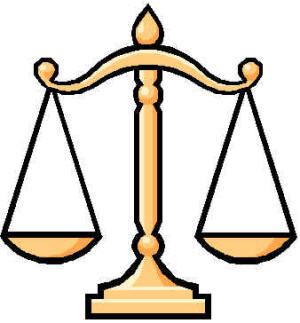Catholic Medical Quarterly Volume 69(1) February 2019
Semper Idem
The Bioethics Column
Two Tools for Decision Making by Thaddeus, A Young Catholic Bioethicist
 Having
introduced the concept of health and how Catholic clinicians should relate
to it, we can proceed to reflect on some of the principles governing
ethical reasoning, or, so to say, conscientious [1] decision-making. In
this issue we will look briefly at the Principle of Double Effect and
issues relating to the cooperation with evil, and then highlight some
important points that come from these. Hence, we will look more at whether
we are allowed to do something, rather than whether we should do it.
Having
introduced the concept of health and how Catholic clinicians should relate
to it, we can proceed to reflect on some of the principles governing
ethical reasoning, or, so to say, conscientious [1] decision-making. In
this issue we will look briefly at the Principle of Double Effect and
issues relating to the cooperation with evil, and then highlight some
important points that come from these. Hence, we will look more at whether
we are allowed to do something, rather than whether we should do it.
The Principle of Double Effect can be applied when an act has both a positive effect and a negative side effect to decide if the bad effect can be tolerated, and hence the action performed. The seminal case that introduced this principle to the wider debate is Aquinas’ self-defence case (Summa Theologica, II-II Q64, 7), though neither did Aquinas formulate the classical conditions used in the application of this principle, nor was it the first instance in Christian literature to which such reasoning could be attributed (see 1 Maccabees 6:43-47) [2]. Currently, the four commonly accepted conditions of the Principle of Double Effect [3] are:
- The act itself cannot be intrinsically evil
- The good effect cannot be realized through the bad effect
- Only the good effect is willed
- There must be a proportionate reason for accepting the bad effect
Cooperation with evil.
In his accessible book ‘Catholic Bioethics for a New Millennium’ Archbishop Fisher[4] discusses various aspects of cooperation with evil. These range from considerations of how remotely the cooperation occurred in time and space, how necessary it was for the evil act, as well as whether the bad intentions were shared or not. These are important considerations, for we can never remove ourselves from all association with evil. Our colleagues might be involved in illicit procedures, and working for the benefit of our NHS Trust might also benefit some illicit services provided by the Trust. As an example medical discoveries such as Dr. Jerome Lejeune’s work establishing the chromosomal basis of Downs Syndrome were clearly and primarily intended for righteous use. But their misuse to screen and eliminate children with Downs syndrome are not the responsibility of Prof Lejeune.
We can never share in the bad intentions of others or directly assist others in their bad deeds, e.g. by helping an abortionist with an abortion; but we might accept that the surgical tools we sterilise or the doctor we help to train might one day be used in or assist in such procedures. We should never will the bad, such as the death of a child, but we might accept that an unborn child will die during a lifesaving procedure aimed at treating the mother’s cancer. While we must not as Catholics cooperate directly with evil and we must be careful about what we get involved in, we must also not become paralysed by fear.
End Notes
- It is worth noting that the term ‘conscience’ means with-knowledge, and implies that we need the knowledge of Catholic moral principles to make good decisions. If you are interested in the topic of conscience I recommend Fr Chalmers’ book ‘Conscience in Context: Historical and Existential Perspectives’ Peter Lang, 2013.
- If you are interested in the history of Double Effect see Mangan ‘An historical analysis of the principle of double effect’ Theological Studies 1949.
- See e.g. Eijk CWJ, Hendriks LJM, Raymakers JA ‘Manual of Catholic Medical Ethics’ Connor Court Publishing Pty Ltd, 2014, for more details.
- Fisher A. Catholic Bioethics for a New Millennium. Cambridge University Press; 2012.
Further reading from past issues of the Catholic Medical Quarterly
These issues have also been discussed in the following papers, which you might like to read.
- Crean Fr Thomas OP(2017) What is an intrinsically evil action? Catholic Medical Quarterly Volume 67(3) August. www.cmq.org.uk/CMQ/2017/Aug/what_is_intrinsically_evil_act.html
- Thevathasan P, (2003) Moral Absolutes and the Principle of Double Effect. Catholic Medical Quarterly 53(4) November. www.cmq.org.uk/CMQ/2003/moral_absolutes_double_effect.htm
- Shaw Joseph (2013) Double effect in Beauchamp and Childress. Catholic Medical Quarterly Volume 62 (1) February 2012, p20 26. www.cmq.org.uk/CMQ/2012/Feb/01-double_effect.html
